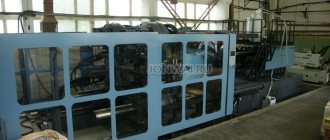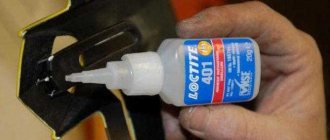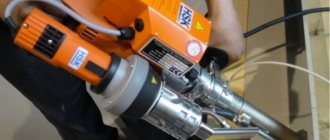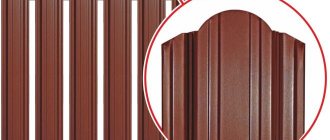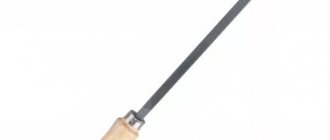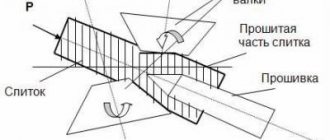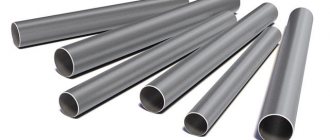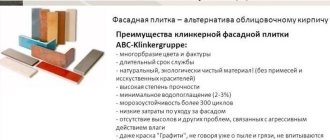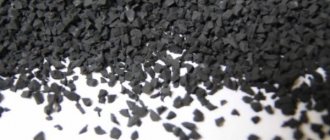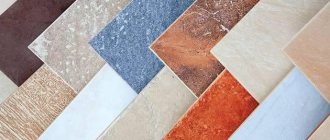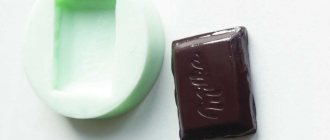In this article we will talk about the main technologies for manufacturing plastic products and help you choose the most suitable method for your purposes.
Today, the technology for producing plastic products is available not only to large industrial companies with huge circulations, but also to ordinary people, inventors and businessmen. Production technologies make it possible to create plastic parts or housings for any product in any quantity, which opens up new avenues for invention, creativity or business. For example, in the last article we wrote about the production of housings for quadcopters as a ready-made business idea, which almost no one is doing in Ukraine.
There are three technologies for manufacturing plastic products. All of these technologies make it possible to create high-quality plastic products, but they have some differences . Let us consider in detail each of the technologies, its advantages, disadvantages and areas of application. Our article will help you choose a technology for the production of plastic products specifically for your case.
The production of a plastic case is preceded by the creation of a 3 D model . more about the instrument housing modeling here.
Technology for the production of plastic products using 3D printing
Today, 3D printing technology has gained incredible popularity not only in the world, but also in Ukraine. Using a 3D printer, you can relatively quickly obtain a finished product and use it as a prototype, for an exhibition or presentation, or in scientific activities when modeling various processes. Printed products allow you to fully evaluate the functionality of the future plastic case without significant costs for launching multi-batch production. From this point of view, the technology for producing plastic products using 3D printing is an indispensable tool for assessing the profitability of a product. In addition, at this stage you can easily notice flaws or shortcomings in the functionality of the item and remake the 3D model.
The most common 3D printing method is FDM technology . This method is used in almost all areas of production. Printing is carried out layer by layer by entering the material (polymer filament) into the dispenser nozzle. FDM technology is limited by the size of the printer, but it is possible to create several parts of a product and then glue them together. When using this technology, it is necessary to create special supports if the product has large angles of inclination. After printing, these supports are removed. In addition, SLS (laser sintering of powder) and SLA (laser sintering of liquid photopolymer) technologies are widely used. Depending on the materials used, it is possible to obtain a housing from different types of plastic of any color.
Contact KLONA for 3D printing services . We will help you choose the most suitable 3D printing method, choose the material that is suitable for your product, and the equipment to implement your project.
3D printing refers to the piece production of plastic products, as it is an ideal option for producing cases or parts in small runs (up to 20 pieces).
Advantages of manufacturing products using 3D printing
- There are no preparatory steps : immediately after receiving the 3D model, it can be sent to the printer for printing.
- A very simple method that does not require additional equipment.
- Allows you to achieve fairly high accuracy of the product , which depends on the printer used.
- A large selection of materials and printing methods allows you to implement any project.
Disadvantages of 3D printing technology
- low productivity : printing one product can take several hours, when in other methods of manufacturing plastic cases it can take several seconds;
- limited dimensions of the resulting products : if the body is very large and must be solid, then 3D printing may not be suitable for such a request due to the limited size of the printer.
When creating plastic cases, the development of the industrial design of the product is very important. Industrial designers at KLONA create the most convenient and functional enclosures in terms of production technology and ease of use. Recommendations for case design can be found here.
Manufacturing of plastic products - types of products
The scope of use of plastic as a material has virtually no restrictions. This is an additional argument in favor of business.
Potential clients of the production plant:
- plastic goods are:
- agricultural industry;
- medical institutions;
- construction companies;
- automobile enterprises.
The most popular types of products:
- packages;
- disposable tableware;
- bottles and other containers for drinks, household chemicals, hygiene products;
- buckets, basins, water tanks;
- containers for food and household items;
- children's assortment - toys, dishes;
- spare parts for cars;
- linoleum;
- construction fasteners;
- equipment for playgrounds, leisure and entertainment centers, schools and kindergartens.
Technology for the production of plastic products: casting in silicone molds
This method refers to small-scale production and is best suited for the production of a small batch of products (from 20 to 1000 pieces).
To make silicone molds, you need a master model - a prototype of the future product. As a master model, you can use a ready-made plastic case or one printed on a 3D printer.
After receiving the master model, you can begin making a reverse silicone mold . Using adhesive tape, the parting lines of the mold are marked and the holes are closed. A gating system for supplying silicone is placed inside and formwork is installed. This technology for the production of a plastic product consists of pouring high-quality degassed silicone into a formwork within which the prototype is located. After this, the silicone hardens and the mold can be used for mass production. The process of making a silicone mold takes about a day.
The heated plastic is poured into a silicone mold, where a vacuum environment ensures the removal of gas and air bubbles that form when the plastic is mixed with the solvent. After the plastic has hardened, the mold is ready for the next casting. It is possible to significantly increase productivity by using several silicone molds simultaneously.
Advantages of the silicone molding method
- Silicone perfectly follows the shape of the master model, which allows you to achieve high accuracy .
- The method is characterized by a relatively low cost for small runs.
Disadvantages of using silicone molds
- using one silicone mold you can get up to 20 finished products , depending on its durability;
- limited dimensions of the resulting products: silicone molds are used to produce small and medium-sized parts (up to 30-40 cm);
- low production speed (plastic hardening can take several hours, which allows you to produce only 5-10 products from one mold per day);
- limited design - the minimum thickness of plastic products should be 0.1 mm.
Classification of plastics
Depending on the composition:
- Sheet thermoplastics – vinyl plastic, organic glass. They consist of a resin, a stabilizer and a small volume plasticizer.
- Laminated plastics - getinax, fiberglass, textolite - plastic, which includes paper or fabric fillers.
- Fiberglass – glass fibers, asbestos fibers, cotton fibers. The fillers in this plastic are fibrous.
- Molding masses are plastics made from resin, which is the only component in the mass.
- Press powders are plastic with powdery fillers.
By area of application:
- Thermal insulation – used in construction (foam plastic, foam plastic and others. This is gas-filled plastic).
- Chemically resistant - used in industry (polyethylene, vinyl plastic, polypropylene, fluoroplastic).
- Structural (fiberglass, textolite and others).
- Press powders are general purpose plastics.
Depending on the binding material:
- Epoxy plastics (epoxy resins are used for binding).
- Phenoplastics (binder – phenol-formaldehyde resins).
- Aminoplasts (melamine-formaldehyde and urea-formaldehyde resins are used as a binder).
Based on how the binder reacts to increased temperature, plastics are:
- thermosetting - when heated they become soft and melt, but after a certain chemical reaction the plastic hardens and becomes insoluble and infusible. It cannot be reused; melting it down is useless. Such plastic is suitable as a filler for creating press powders;
- thermoplastic - such plastics easily melt when heated and harden when cooled. This material can be melted down and made into a new product, but its quality will be slightly lower.
Technology for the production of plastic products using plastic injection molding
This method is suitable for large-scale production (from 1000 parts) of plastic cases. When molding plastic under pressure, it is possible to obtain products of complex configurations from different materials (polymers, metal, etc.). The technology consists of casting heated material under pressure into molds.
A mold is a device that accurately replicates the design of the future product. High pressure is necessary to ensure that the plastic or metal fills all the small holes and recesses in the mold. An integral stage of mold manufacturing is mold design. This is much more difficult than creating a silicone mold.
the service of designing a mold for your product from KLONA. Our modelers are skilled in designing molds for complex housing configurations. Read more about the service here.
Molds are made of high-quality metal based on a 3D model. They are characterized by high durability, strength and precision. Molds are used in all types of industry to produce plastic, metal and other injection molded products.
Advantages of injection molding production
- Low cost of products for large quantities.
- There are no restrictions on the configuration of plastic products.
- Identity of all products and low percentage of defective products.
- Durability of molds (KLONA company provides a guarantee on molds for the entire period of cooperation).
- One mold can produce an unlimited number of products (any worn part can be replaced with a new one). In addition, there are multiple molds that allow you to produce dozens of products at a time (for example, pen caps).
- High productivity : the formation and cooling of one case occurs in less than one minute (depending on the configuration, it can be from 5 seconds). Read more about the types of molds here.
Disadvantages of mass production technology in the manufacture of molds
- the mold design process can take several weeks , which significantly delays the start of production;
- production and design of a mold even for a small plastic case will require large costs at the start of production .
Technological process for manufacturing plastic products
Tableting. When processing plastics by compression molding, precise dosage of the press material loaded into the mold, reduction of burr losses, ease of loading the mold, etc. become of great importance. From this point of view, tabletting of the material, which consists in its mechanical compression into solid tablets of a wide variety of shapes, provides great advantages.
Tableting of powdered materials provides the following advantages:
- The volume of required material is reduced, and accordingly the dimensions of the loading chambers of the molds are reduced;
- The process of weighing the material before loading it into the mold is eliminated, because tablets have a certain weight;
- Loading of the mold is accelerated;
- By reducing the inclusion of air, the curing of products is accelerated and the pressing cycle is shortened;
- Preheating conditions are improved, since the tablets are heated at a higher temperature;
Typically, tablets are shaped like cylinders of varying heights, but in some cases they can be shaped to resemble the shape of the finished product.
Not all materials are equally amenable to tabletting. The best results are obtained by tableting granular press material that has the same grain size, providing the required volume and weight with minimal air inclusion. Tablets made from powdered material have a lower density.
Tableting can be cold (unheated molds) and hot (helps reduce the volatile content in the tablet material, increasing its strength and specific gravity).
Preheating . Preheating is one of the most important stages of the overall plastic pressing process. There are two types of heating: low and deep. Low heating is used for all types of powdery and granular press materials. Low heating is used for all types of powdery and granular press materials. Tablet press materials are subjected to deep heating.
Preliminary deep heating makes it possible to uniformly heat the tablets throughout their entire thickness to a temperature equal to the pressing temperature. As a result, tablets loaded into the molding cavity of a compression mold or the crucible of an injection mold are immediately crushed when punch pressure is applied. The material, tablets, turning into a plasticized state, spreads over the molding cavity and quickly hardens.
The use of preheating achieves:
- Reducing the holding time of the product in the mold by 50-60%;
- Reducing specific pressing pressures by 20-60%;
- Increased material fluidity by 25-60%;
- Reduced mold wear.
Pressing and molding of plastics . The technological process of pressing and casting plastics is formed from the following stages: preparing the material for pressing, preparing the mold, pressing itself and finishing operations.
Material preparation includes weighing or measuring the dose of material required for compression, making tablets and preheating. When manufacturing products on injection molding machines, the dosing of the material entering the machine cylinder is carried out automatically immediately before injection.
Mold preparation includes: cleaning the mold, installing reinforcement (if any) into the mold cavity and loading with press material.
The process of compression pressing consists in the direct molding of the product, during which pre-pressing can be done, in opening the mold and removing the pressed products from it. During injection molding, no pre-pressing is performed.
Violation of the pressing regime leads to defective products even with a completely serviceable mold and good quality material.
You can find out the price for molding plastic products by sending an order by email or calling m/t 067-64-63-882, 095-408-41-39, t/f 0462-65-15-44. You shouldn’t burden yourself with thoughts about delivering finished products, we will do it, and to any city in Ukraine (Lviv, Chernivtsi, Zaporozhye, etc. ).
www.ooo-stk.org
